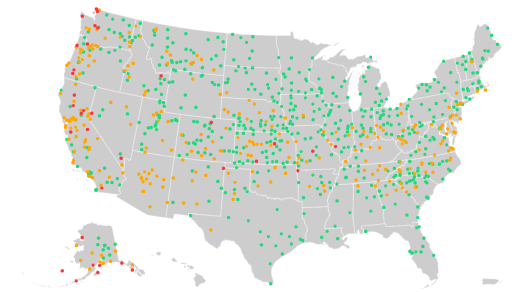Share This Article
Spring is the season of change. It serves as a transition period between winter’s frigid cold and the sweltering heat of summer.
But spring itself is also going through a transformation of sorts. Like everything affected by climate change, spring is different than it used to be. So as we kick off another season of warming temperatures, budding flowers and cooling rains, here’s a look at how spring has changed.
Climate change has disrupted the natural rhythms of the seasons. Though the impacts vary from year to year, in general, winter is becoming warmer and shorter. That means the cold that prevents plants from thriving is less intense and is fading away earlier.
Scientists at the Environmental Protection Agency have found a way to quantify this change. Using records of life cycles of honeysuckle and lilac plants from across the country going back to the middle of the 20th century, they have marked when these plants start to show signs of bouncing back from winter (what they call the first leaf) and when they sprout flowers (called the first bloom).
In most of the country, first leaf and first bloom are happening earlier today than they used to. How much earlier spring is arriving varies quite a bit. In some parts of the West Coast and the central Plains, first bloom is coming several weeks — or even a full month — earlier. On the other hand, flowers are sprouting later in certain areas of the Upper Midwest.
More favorable conditions for plants also means more challenges for allergy sufferers. On average, plants start to release pollen about two weeks after they emerge from their winter dormancy. The earlier start means that spring allergy season is becoming “longer and more intense,” according to the EPA.



